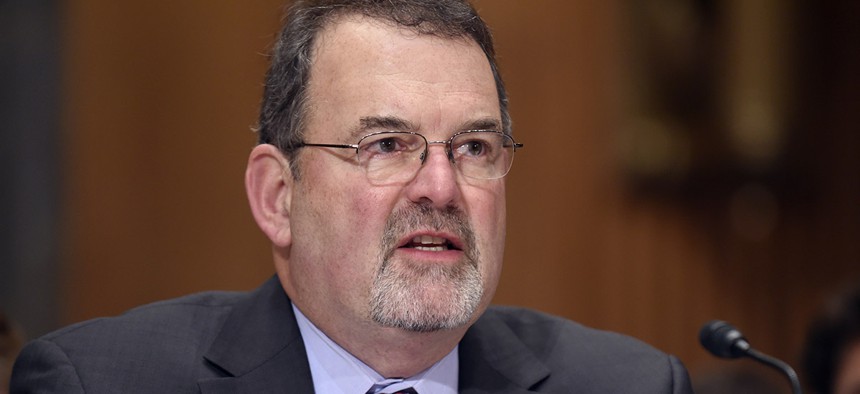Good Governance Key to Good FITARA Implementation

Federal CIO Tony Scott Susan Walsh/AP
“The idea of good governance is simple and pure -- but not often practiced,” U.S. CIO Tony Scott remarked recently.
Darryn Graham is chief architect for Software AG Government Solutions. He can be reached at Darryn.Graham@SoftwareAGgov.com
FITARA is moving beyond something you might want to read up on. As the Federal Information Technology Acquisition Reform Act implementation takes shape, government professionals need to understand their options and obligations under the new law -- and why this is an opportunity for “good governance” across federal executive agencies.
These initial sentiments were shared by Tony Scott, federal chief information officer and administrator for e-government and information technology, with the Office of Management and Budget in his opening keynote address at the FITARA Implementation Symposium, hosted by the Association for Enterprise Information in Arlington, Virginia. AFEI's next FITARA Implementation conference is Oct. 22 for government executives.
“The idea of good governance is simple and pure -- but not often practiced,” Scott remarked.
Why is this the case? Because good governance is hard fought with re-imagining processes, consensus building and a willingness to do business in a completely different way. This kind of enterprise transformation requires long-term collaboration and determination among the principals responsible for organizational mission execution, budget management and technical implementation.
Scott’s governance comments have been spot on. The past is a poor guide to the future for most agencies. Even in the private sector, governance was never seen as a source of fundamental value to the enterprise. It wasn’t until 2004 when companies tried to figure out how to comply with the demands of Sarbanes-Oxley that governance efforts started to spark. The efforts were reactive and required a great deal of time -- in part because the insights needed were not readily obtained.
Organizations that had grown up organically over time had implemented a wide range of systems, processes and protocols that rarely interacted well. Thus, the insights and information organizations had to develop to achieve compliance often required many people to collect, validate and normalize information coming from many different sources and many different locations. While many agencies have made investments in automating business processes, tying and analyzing these processes to technology investments and infrastructure and ultimately to mission is the next step.
“If FITARA did nothing more than support good governance in an agency, I’d declare that a victory,” Scott stressed. He added that he is optimistic that over time, by implementing the plans and collaborative approaches outlined in the FITARA legislation, agency staff, including the senior management team and the CIOs, will be able to identify their most valuable information and strategic assets and agree on the best ways to protect them.
He emphasized the importance of aligning technology infrastructure with supporting fundamental agency goals by stating, “When you get it right, the results are transformational.”
FITARA has the potential of being a tipping point for government agencies in the area of good governance. Ideally, instead of looking backward and treating governance as a burden, agencies have an opportunity to look forward optimistically by taking maximum advantage of the technical breakthroughs that have emerged over the past decade.
Agencies can look to implement greater automation to facilitate the promise of “intelligent GRC,” the term coined to describe when organizations have a full understanding of business processes and have automated them to facilitate automating real-time monitoring and real-time data analysis against those processes.
Intelligent GRC allows agencies to shift to control systems that operate continuously and that can facilitate decision making based on predictive analytics. Advancements in IT portfolio management and analysis have also been significant over the years. Aligning IT with mission objectives is now a reality. Overall, the answer to what changes FITARA will inspire for each agency will be different and will depend on the current state of your organization’s infrastructure, organizational alignments, business processes and more.
As agency professionals dig deeper into the planning and monitoring called for by FITARA, it is anticipated they will gain a deeper and broader understanding of their IT portfolios and how best to manage their hardware, software, applications, data, services and programs. With this enterprise portfolio management approach, it is likely only those initiatives and technologies that can be tied directly to meeting priority missions and overall goals will be considered, funded and well executed.
NEXT STORY: Review: Finally, a Better Inkjet Printer?






 By
By